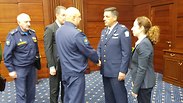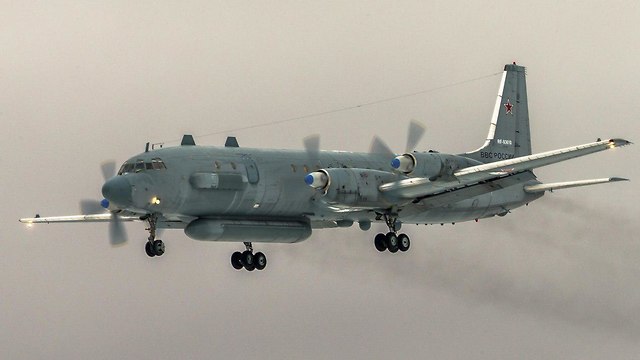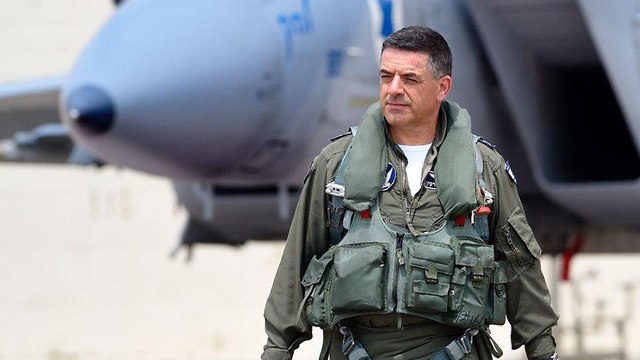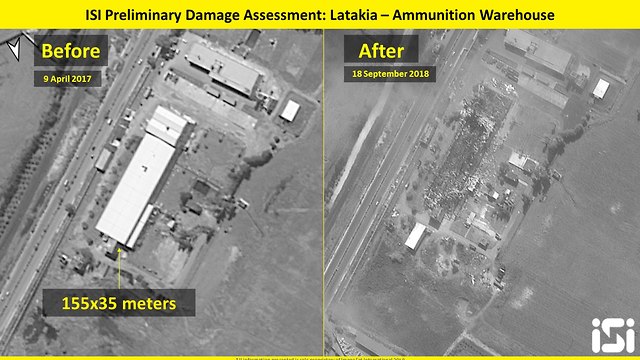Israeli Air Force (IAF) chief Maj. Gen. Amikam Norkin, presented to senior military officials in Moscow on Thursday the IDF report describing the attack in Syria on Monday in which a Russian military plane was accidentally downed while President Bashar Assad's forces were attempting to repel an Israeli attack.
Following Syria's accidental downing of a Russian plane, in which fifteen Russian crew members were killed, Norkin and other senior officers said they formed "a situation report of the event regarding all aspects, including the pre-mission information and the findings of the IDF inquiry."
The report was presented at a special meeting held in Moscow, after the head of the defense ministry in Moscow accused Israel of indirectly causing the downing of the surveillance plane
The IDF says that the fact that, to this day, no foreign aircraft has been shot down by Syria is a miracle.
According to the report, the coordination system between the IDF and the Russian army prior to the attack operated according to procedure and fixed orders, as shown in more than 200 similar attacks in the last two years, with an emphasis on recent attacks.
In addition, the Syrian air defense system operated several anti-aircraft batteries deployed throughout Syria. These batteries fired for more than half an hour, even while the Israeli fighter jets were en route to Israel.
According to the IDF maps presented to the Russians, there was no room for doubt: the Syrian anti-aircraft attack included dozens of missiles of various sorts, including the advanced Soviet S-200 missile that downed the Israeli fighter plane in the Galilee in February.
The Syrian warplanes fired missiles in all directions: south towards Lebanon, east to Syria, and west towards the coast—where the Russian plane was shot down. According to the IDF report, this multifaceted attack demonstrates the Syrian army's "rampage."
The IDF Spokesperson's Unit said on Tuesday that the Syrian facility IAF targeted was about to transfer weapons to Hezbollah on behalf of Iran.
The report includes satellite images of sites attacked by the IAF, which prove that in contrast to the official footage released by Syrian media, there the structures were rocket factories and not aluminum factories, as Assad's regime claimed.
![]()
Senior IAF officers also presented a greater concern to their Russian counterparts. IDF data shows that until February, the Syrian anti-aircraft system, which is the largest and most densely populated in the Middle East, only fired a few missiles in the IAF's attacks.
In February the army faced a turning point. An Israeli F-16 aircraft was shot down and crashed after IAF successfully intercepted an Iranian drone launched towards Israel at night.
The downing of the IAF aircraft by Syria, the first of its kind in the last three decades, stimulated the Syrian's appetite for the antiaircraft system.
In addition to the rapid rearmament of Russia's new missiles and advanced batteries, mere weeks after they were destroyed in the attack on IAF, about half of the aircraft inventory has grown, and with it, Syrian audacity too.
Since then, in each attack, the Syrian army launched dozens of anti-aircraft missiles at the IAF. Syria launched a record number—about 170—of anti-aircraft missiles at IAF planes in May, during the night of "Operation House of Cards."
In Syria's subsequent air force attacks, the country launched large quantities of anti-aircraft missiles.

The coordination system between the Syrian army and the Russian army operates in these type of situations, but according to the IDF, several mistakes were made which led to the shooting down of the Russian military plane.
The IAF operations will continue, in coordination with the Russians, but it is quite possible that the current event will further increase Syrian and perhaps Iranian and Hezbollah's willingness to attack Israel in the next round of airstrikes.
Intelligence Minister Yisrael Katz said in a studio interview with Ynet Friday that "inside Syria itself, soldiers who targeted the Russian plane were arrested by the Russians or by Syrian officials with Russia's cooperation."
"Obviously, Syria made a serious mistake here. It irresponsibly launched missiles. Israel acts according to the same rules that were agreed upon, and of course will continue to abide by these rules in the future us as well," Katz added.
In an Army Radio interview, Katz also noted that "Putin did not answer Assad's phone calls after the Russian plane was shot down."




















